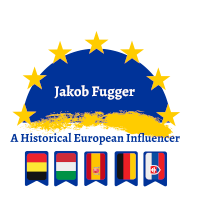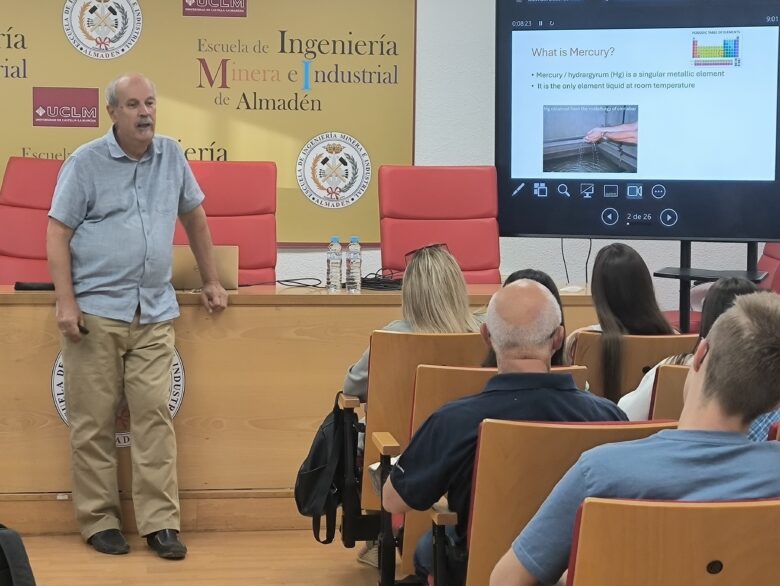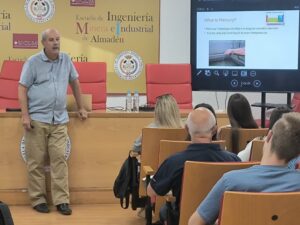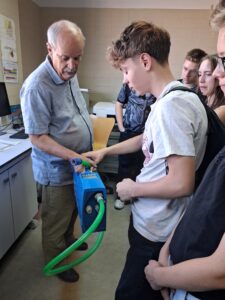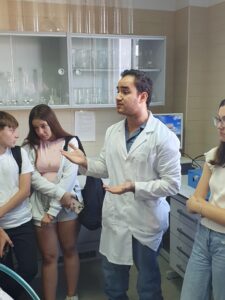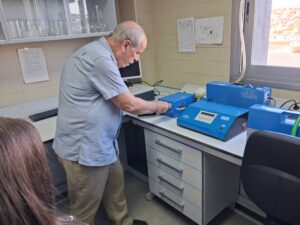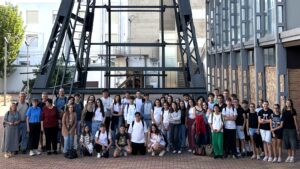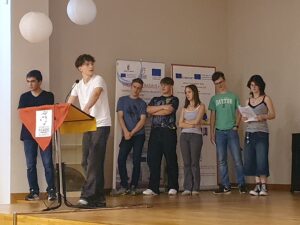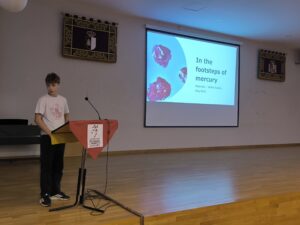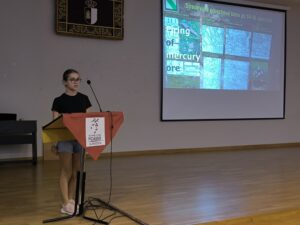The morning of the second day of the IFYC25 offered a rich blend of scientific inquiry and cultural engagement. Through expert-led sessions, interactive workshops, and student presentations, participants deepened their understanding of mercury’s environmental and health implications while also experiencing elements of Spanish heritage. The morning was both educational and dynamic, reinforcing the conference’s interdisciplinary approach.
The second day of the conference began with a visit to the historic Cárcel de Forzados (Slave Jail), where participants received insights into the building’s dual function as both a penal institution and a holding facility for laborers destined for hazardous mining work. The site visit included a brief tour of the ruins and a reconstruction of the original structure, offering a sobering glimpse into the region’s mining history.
Following this, Professor Pablo Higueras delivered an in-depth presentation at the university on the environmental and health risks associated with mercury. He explained the toxic properties of mercury, its historical and contemporary applications, and its particular relevance to Almadén. Under his supervision, students were introduced to laboratory equipment used to measure mercury contamination in air and soil. Samples were circulated for observation, providing a hands-on learning experience that complemented the theoretical content.
The group then returned to IES Picasso, where a cultural workshop on Sevillanas, a traditional Spanish dance, was held on the sports field. Participants learned the basic steps and hand movements required for the dance, which is performed in pairs and involves coordinated movements in various directions. Although challenging, the workshop was both enjoyable and a valuable cultural experience.
Later in the day, the focus returned to the scientific theme. Mr. Haas presented the results of a mercury awareness survey conducted among students, their families, and friends. The survey explored public familiarity with mercury, its presence in households, and general knowledge about its properties and risks. This was followed by presentations from each participating school, highlighting the presence and impact of mercury in their respective regions. For instance, the delegation from Germany reported about mercury accidents in the recnt past in Northern Bavaria and about an actual problem in the city of Augsburg called the “mercury hotel”, where the audience could learn that mercury is a quite actual subject. The team from Banská Bystrica presented their research in frame of historical mine next to the city, where they still found cinnabar. The team from Sterzing had a detailed look at the offical measurements of mercury pollution in their region and luckily all probes where negative or no limits were exceeded.
